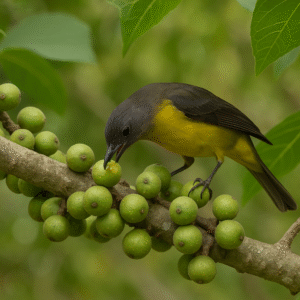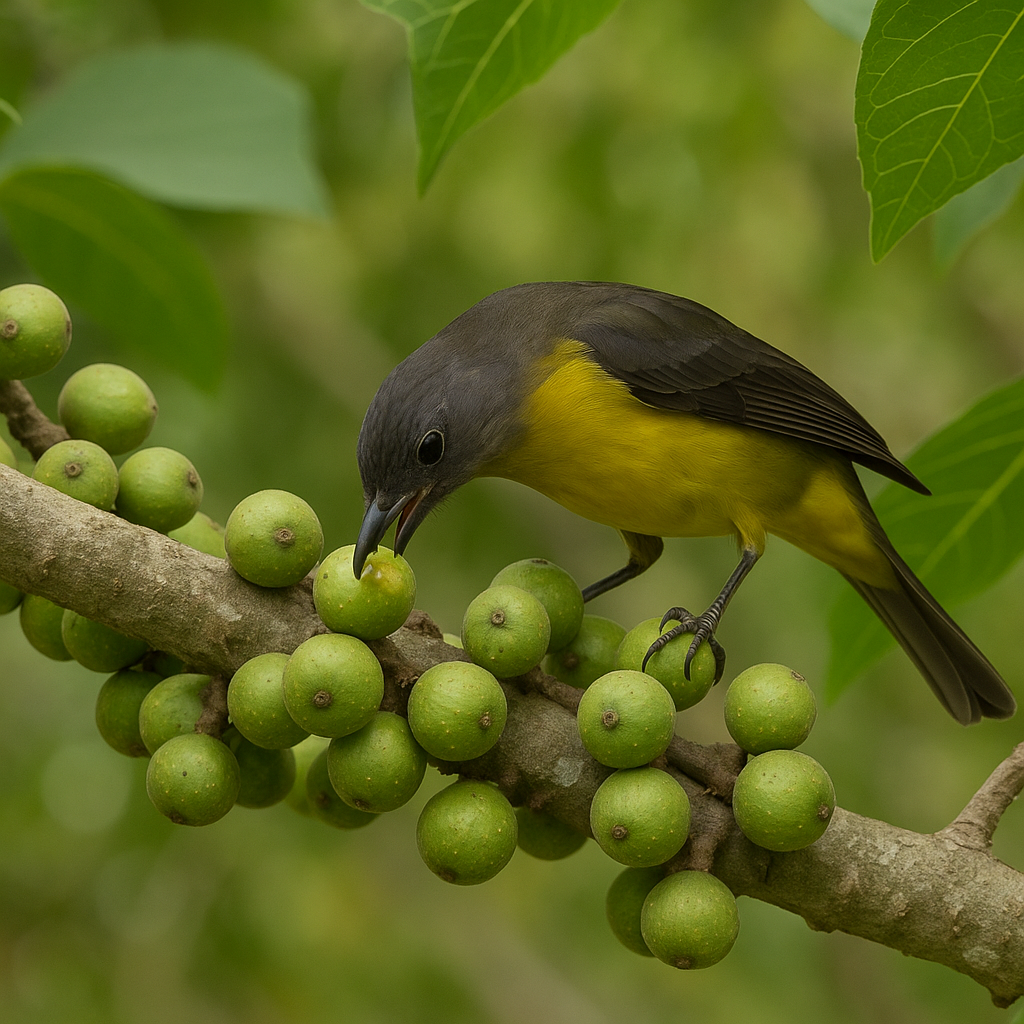The wild fig tree is a remarkable species that draws attention both for its size and for its ecological importance. Found across several regions of Brazil and other Latin American countries, it belongs to the Ficus genus, the same group that includes the white fig tree and many other species of the Moraceae family. Although often confused with other types of figs, the wild fig tree has unique characteristics, capable of reaching impressive sizes and playing an essential role in nature.
In this article, you will learn what the wild fig tree is and discover 3 fascinating facts that explain why this tree is so important.
What Is the Wild Fig Tree?
The wild fig tree is the popular name for different species of the Ficus genus, especially Ficus insipida, which is common in tropical forests and secondary growth areas. It is a large tree, often exceeding 20 meters in height, with a wide crown and spectacular surface roots.
The term “wild” comes from its vigorous growth and ability to adapt to different types of soil. When it sprouts in urban areas, near sidewalks, walls, or houses, its roots can damage structures, making it hard to manage in cities. However, in its natural habitat, the wild fig tree plays a crucial ecological role in maintaining biodiversity.
Another defining feature of this tree is its pioneering nature. The wild fig tree is able to colonize degraded areas quickly, providing shade and organic matter that improve the environment and allow other plants to thrive.
1. Connection With Wildlife
One of the most fascinating facts about the wild fig tree is its deep connection with animals. Its fruits, commonly called figs, are small, round, and produced in clusters. Even though they are not consumed by humans, they are essential food for birds, monkeys, and bats.
The pollination process is also unique. Wild fig trees rely on tiny wasps that play a fundamental role in their reproduction. This mutual relationship ensures that the tree is pollinated while the wasps find a safe place to complete their life cycle. This interaction is a textbook example of mutualism in tropical ecosystems.
2. The Power of Its Roots
The roots of the wild fig tree are one of its most impressive features. They often extend above the soil, wrapping around rocks, other trees, or even man-made structures. While this can be a threat to urban construction, it is a natural wonder in forest landscapes.
These roots not only provide strong support for such a massive tree but also stabilize the soil, helping to prevent erosion and landslides. In hilly regions, they act like natural anchors, keeping the ground firm.
Because of this, wild fig trees are frequently associated with strength, endurance, and longevity. In many cultures, trees with exposed roots are seen as sacred symbols of resilience and connection to the earth.
3. Cultural and Environmental Importance
Beyond its ecological role, the wild fig tree also has cultural value. In some communities, it is considered sacred and connected to myths and legends. Its large shade has historically served as a gathering place in villages, sometimes even hosting rituals and community events.
From an environmental perspective, the wild fig tree is classified as a keystone species. This means that many other species depend on its presence for survival. Because it produces fruits during different times of the year, it provides food for wildlife even in seasons of scarcity.
In addition, as a large tree, it contributes significantly to carbon sequestration, helping mitigate climate change while preserving biodiversity.
Wild Fig Tree vs. White Fig Tree
The wild fig tree is often confused with the white fig tree (Ficus guaranitica), but they are not the same. While both belong to the same genus, they differ in leaf shape, habitat, and fruit characteristics. The white fig tree is commonly found in wetland areas and also grows tall, but its ecological role is slightly different.
Being able to distinguish between these species is important in reforestation projects and urban landscaping, where their growth patterns and ecological needs must be considered.
Conclusion
The wild fig tree is much more than just a giant tree—it is a symbol of strength, a lifeline for wildlife, and a vital part of tropical ecosystems.
Whether through its relationship with animals, its impressive root system, or its cultural and ecological relevance, this tree continues to inspire awe and respect. Learning more about it reminds us of the importance of protecting native species and preserving natural habitats.
By valuing trees like the wild fig, we not only admire their beauty but also understand their crucial role in maintaining balance in nature.

🌿 Bring the Natural Freshness of Fig to Your Home
The P&J Trading – Fig Scented Oil 100ml is perfect for those
who love a sophisticated and refreshing fragrance. Ideal for
candle making, soap crafting, diffusers, and more.
Add a warm and welcoming touch to any space with this versatile oil.

⛺ Stay Safe During Stormy Camping Adventures
Camping in the middle of nature is an amazing experience, but
being prepared for unexpected storms can make all the difference.
Learn 7 essential safety tips to keep your adventure safe
and enjoyable, even when the weather turns rough.

